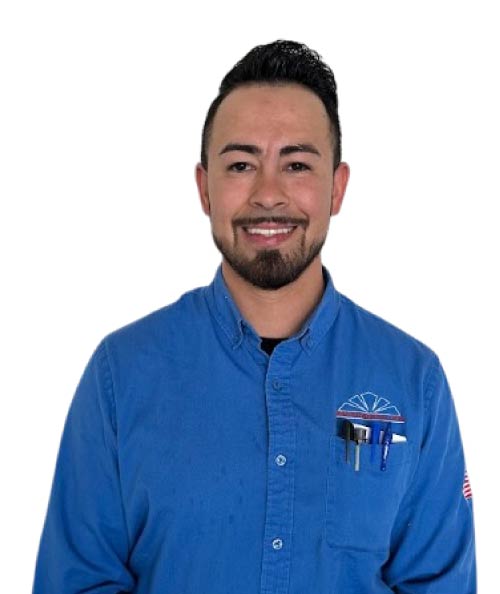There is nothing more frustrating than stepping inside on a hot day only to realize your air conditioning is blowing warm air. If your unit is running but failing to cool your home, you’re likely asking: ‘Why is my AC not blowing cold air?’ While this is a common problem, the cause can range from a simple, quick fix to a serious mechanical failure.
Understanding the underlying issue is the first step toward restoring comfort to your home. If your unit is experiencing issues, you may be in need of an expert AC service call to diagnose the problem quickly. We have compiled a list of the most frequent culprits behind an AC that is not cooling efficiently.
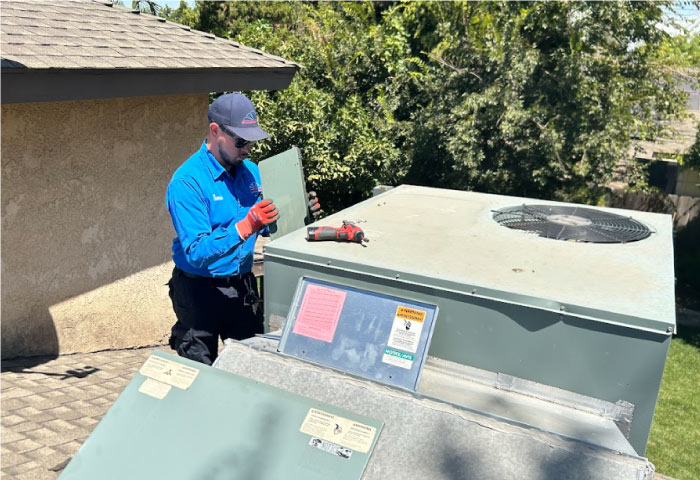
Common Reasons Your AC Stops Cooling Effectively
A variety of issues, from simple maintenance oversights to complex system component failures, can cause your AC to stop cooling. Here are the top five reasons why a central AC unit may be blowing warm air.
1. Clogged or Dirty Air Filters
A dirty or clogged air filter is the most common cause of an AC not blowing cold air. Filters trap dust, dander, and other particles to keep them out of your system, but when they become too full, they restrict essential airflow.
Restricted airflow forces the system to work harder, reducing its cooling capacity and potentially leading to bigger issues.
2. Low Refrigerant Levels or Leaks
Refrigerant is the chemical substance your AC uses to absorb heat from your indoor air and release it outside. If your system is low on refrigerant, it cannot cool your home effectively.
Low levels are almost always due to a leak in the refrigerant lines, which requires professional attention to locate and fix.
Signs of a leak can include warm air coming from the vents, poor airflow, and even ice forming on the evaporator coils. If you suspect a leak, call a professional immediately for ac recharge service.
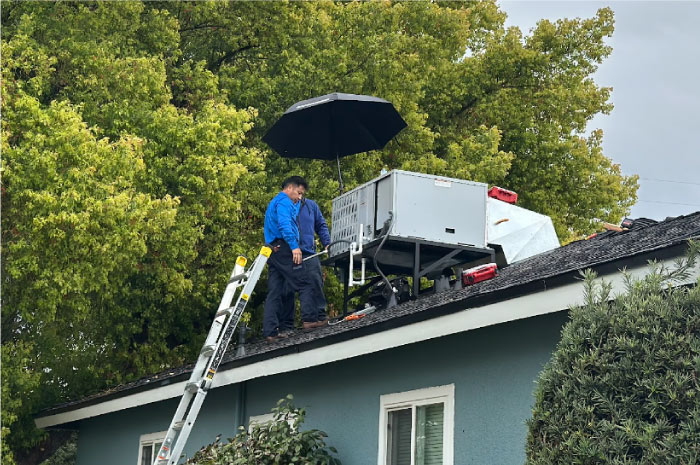
3. Issues with the Thermostat Settings
Sometimes, the answer to why is my AC not blowing cold air is as simple as checking your thermostat settings. The thermostat is your system’s control center, and if it’s set incorrectly, it won’t signal the unit to run the cooling cycle.
Check that the thermostat is set to “Cool” mode, not “Heat” or “Fan”. If the fan is set to “On” instead of “Auto,” it will run constantly and circulate unconditioned, warm air even when the AC isn’t actively cooling.
4. Frozen Evaporator Coils
The indoor evaporator coils absorb heat from the air to cool it. If the coils freeze over, they can no longer absorb heat, which prevents your AC from blowing cold air. Frozen coils are typically caused by restricted airflow from a dirty filter or low refrigerant levels.
If you see ice buildup, turn off your AC unit to allow the coils to thaw before inspecting for the root cause.
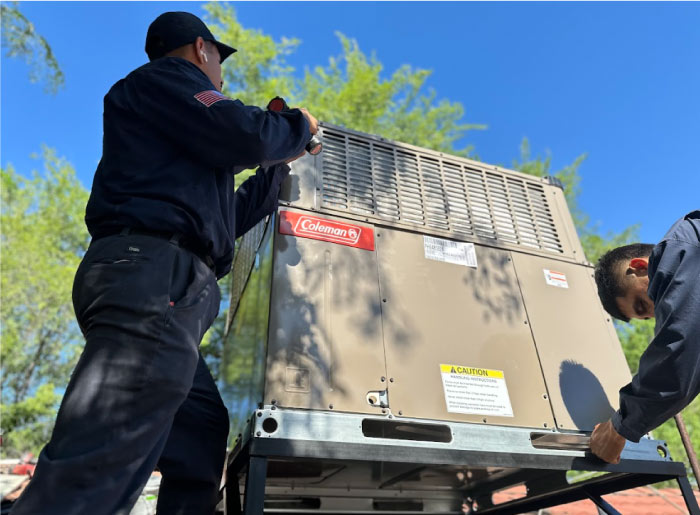
5. Dirty or Blocked Outdoor Condenser Unit
The outdoor condenser unit is responsible for releasing the heat absorbed from your home. When this unit is covered in dirt, debris, leaves, or vegetation, it cannot efficiently expel heat. This blockage forces your unit to struggle and reduces its ability to cool your home. Ensure there are at least two feet of clear space around the outdoor unit for proper airflow.
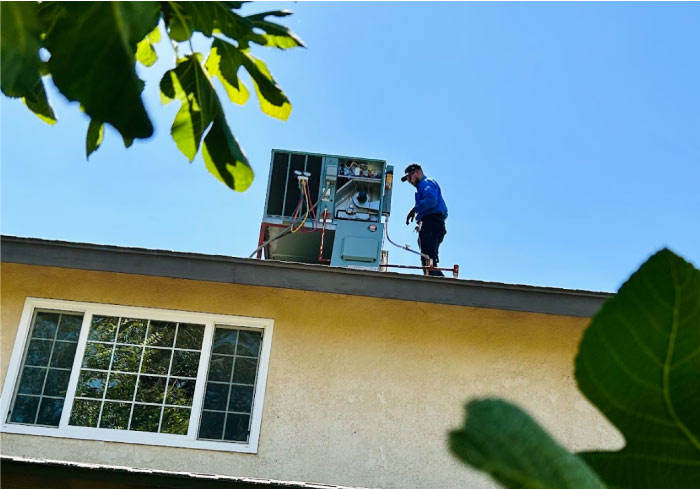
Quick DIY Troubleshooting Steps
Before calling for AC service, there are a few simple checks you can perform yourself. Taking these steps can help solve minor problems or provide valuable information to a technician.
- Change the Air Filter: Inspect and replace a dirty air filter immediately to restore proper airflow. It is recommended to replace it every one to three months, especially during peak use.
- Check the Thermostat: Ensure it is set to “Cool” mode and the fan is set to “Auto”. Also, check the batteries if it is a battery-powered model.
- Inspect the Breaker: Check your electrical panel for a tripped circuit breaker and reset it if necessary. If the breaker immediately trips again, call a professional.
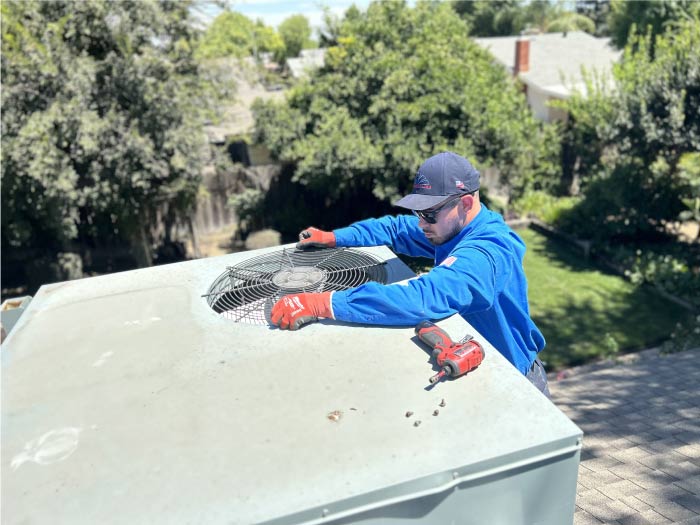
When to Call a Professional HVAC Technician
While the above tips can resolve simple issues, more complex problems require an HVAC professional. If you have checked the basic components and your unit is still not providing cool air, it’s time to call in the experts.
This is especially true if you notice signs of a refrigerant leak, a frozen coil that won’t thaw, or strange noises coming from the unit, which could indicate a faulty compressor. Do not attempt to add refrigerant yourself, as it must be handled by a qualified technician.
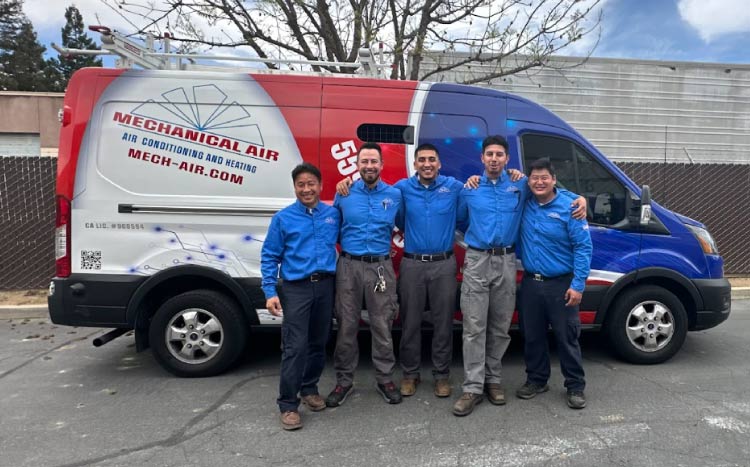
When you need an experienced team to figure out why is my AC not blowing cold air, turn to Mechanical Air. They are experienced in five areas of the HVAC trade: residential and commercial AC cooling, ventilation, and refrigeration.
Mechanical Air provides honest and fair-priced service, with a customer-first, professional, and ethical approach. Their comprehensive expertise covers much more than just residential heating and cooling.
FAQs
How often should I service my AC system?
The general recommendation is to have your system professionally serviced at least twice a year. This typically includes one check for heating and one for cooling to ensure peak performance.
Why is my AC running but not cooling?
If your AC is running but not blowing cold air, the issue is often a problem with the refrigerant level (due to a leak), dirty coils, a faulty compressor, or incorrect thermostat settings.
What are the signs of a refrigerant leak?
Signs of a refrigerant leak include hissing or bubbling sounds, poor airflow, and ice forming on the evaporator coils. If you suspect a leak, turn the unit off and call a professional.
Should I turn my AC off if it’s not cooling?
Yes, you should turn your AC off if it is not cooling properly. Allowing it to run without cooling can cause the system to freeze up, leading to further damage to components like the compressor.
How much does a diagnostic fee cost for AC repair?
The cost for an HVAC diagnostic fee will vary, but for residential service, the fee can be around $69, and for commercial service, it may be around $89.

